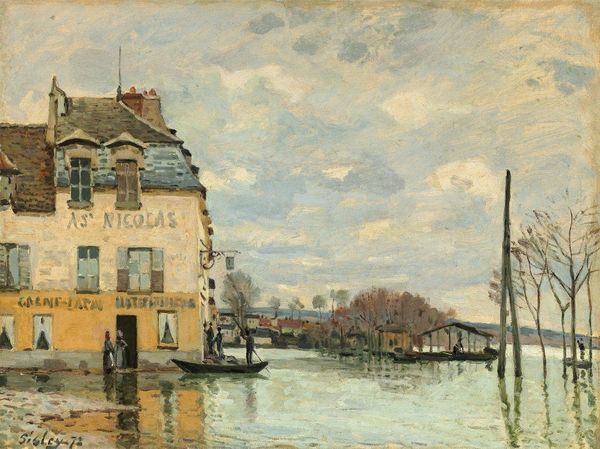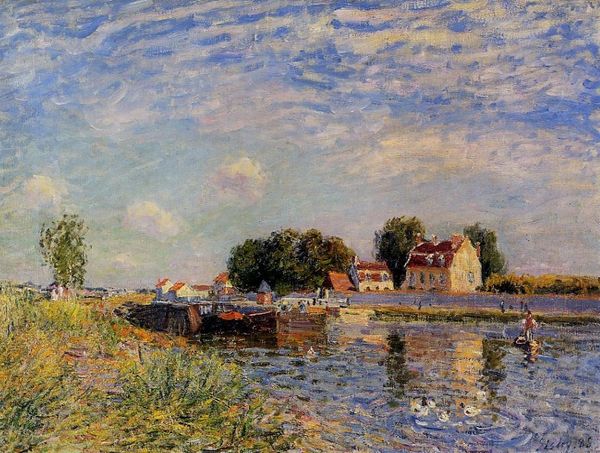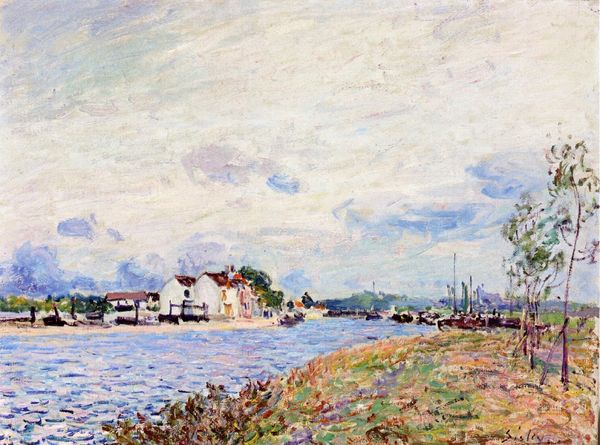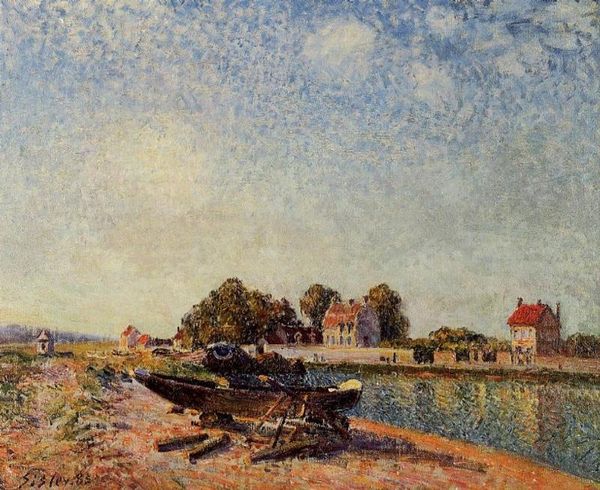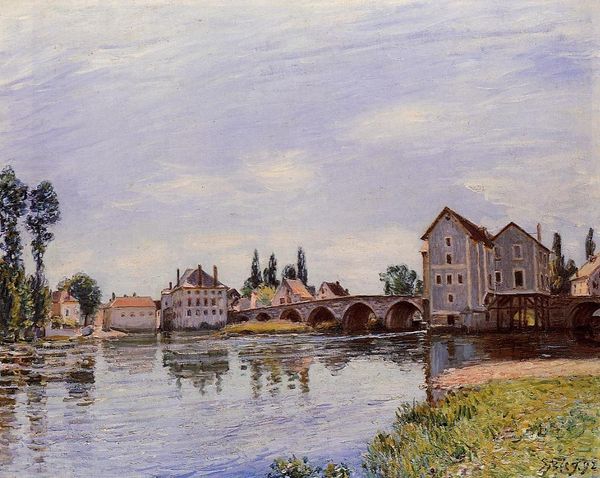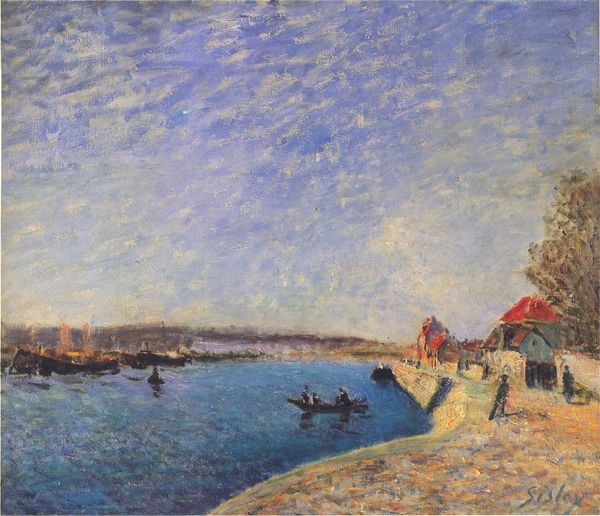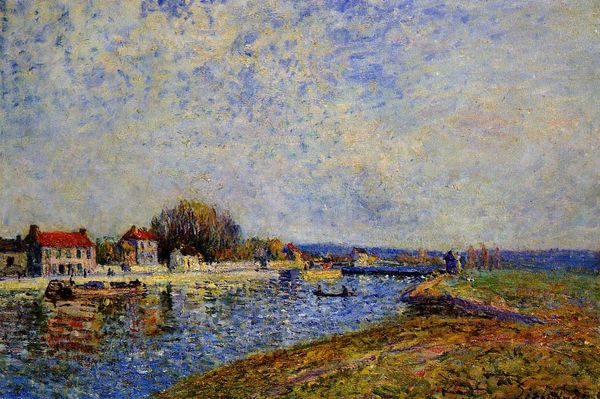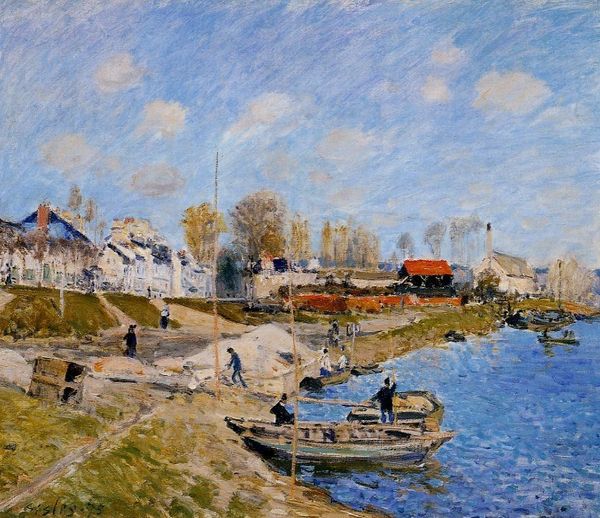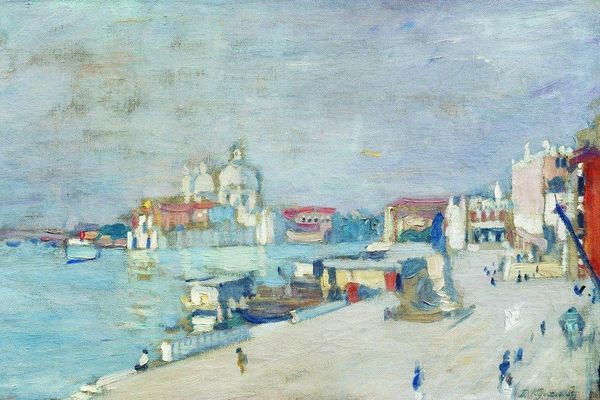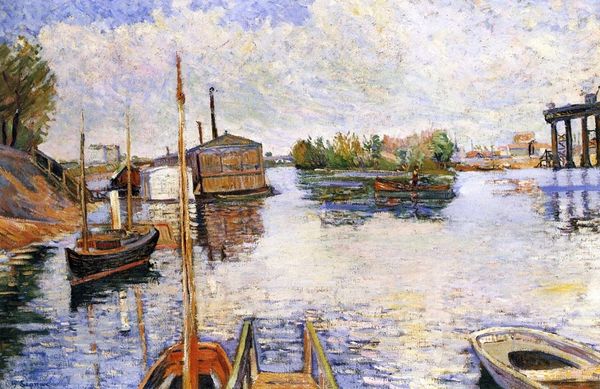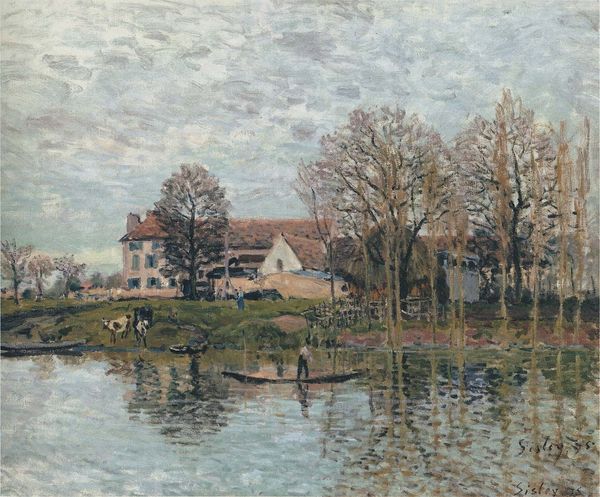
painting, plein-air, oil-paint, impasto
#
painting
#
impressionism
#
plein-air
#
oil-paint
#
landscape
#
river
#
impressionist landscape
#
oil painting
#
impasto
#
water
#
cityscape
#
building
Dimensions: 50 x 61 cm
Copyright: Public domain
Curator: Ah, yes. We are now standing before Alfred Sisley’s “Flood at Port Marly,” painted in 1876. He captures a moment where the Seine has dramatically risen. Editor: The first thing that hits me is the overwhelming feeling of stillness and reflection. Despite being a scene of, ostensibly, chaos with a town flooded, there's this tranquil, almost melancholy mood. Curator: Interesting, isn’t it? The flood becomes a mirror, reflecting the sky. Water often symbolizes purification, but here it feels… disruptive. Note how Sisley uses a muted palette—grays, blues, ochres—to emphasize the somber atmosphere. Editor: Absolutely. And look at the buildings! They aren’t just structures; they’re stoic witnesses, half-submerged, bearing the brunt of nature’s force. "A. S. Nicolas" the lettering above the doorway, it feels significant, perhaps marking a threshold, a transformation. Curator: Precisely! Buildings as symbolic guardians is an enduring theme, but here, they seem vulnerable. Sisley was a master of capturing light, and observe how the diffused light softens the scene. It's almost as if he’s romanticizing this disaster, imbuing it with a sense of sublime beauty. Editor: Romanticizing maybe, but there is also a poignant tension. Are those figures in boats resilient or defeated? Are they accepting nature's power? Sisley has used an almost dreamlike hazy quality. The repetition of verticals in the bare trees, they are half in, half out of the water, and adds a rhythmical balance. It’s as if Sisley wants us to feel both the fragility and endurance of life in the face of overwhelming change. Curator: A very evocative read, absolutely. Sisley wasn't just documenting; he was inviting us to contemplate the transient nature of our world. It's remarkable how he transformed a scene of devastation into a moment of serene reflection. Editor: And ultimately, it leaves us pondering the enduring power of nature and humanity's delicate dance with it. What do we hold onto when the familiar landmarks start to vanish beneath the rising tide?
Comments
No comments
Be the first to comment and join the conversation on the ultimate creative platform.
